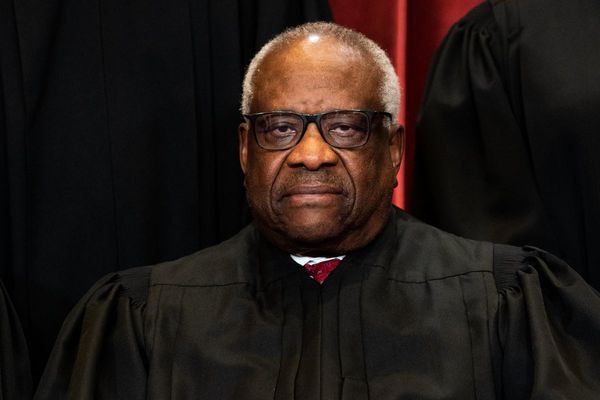
A daring scheme to wiretap the secret communications of thousands of criminals around the world was sketched out over a single week by American and Australian police. They huddled together in overseas hotel rooms and cheap restaurants, and shared grocery store whiskey bottles during a late-night hot tub session.
It turned out even more successful than they ever could have imagined. The operation — named Operation Ironside by the Australian Federal Police (AFP) — began the world’s biggest sting operation.
A new book, Dark Wire: The Incredible True Story of the Largest Sting Operation Ever by reporter Joseph Cox, tells the inside story of Anom, an encrypted phone that was sold to criminals under the pretence of allowing them to securely message each other, but which secretly provided law enforcement agencies around the world with a copy of every message and file sent.
According to Cox’s telling, the AFP’s enthusiasm and willingness to push the boundaries was pivotal to getting an audacious plan for police to run a phone company for criminals off the ground.
Running this company pushed the AFP’s technical, logistical and legal limits. And it paid off. On June 7, 2022, in one fell swoop, 500 people around the world were arrested by more than 10,000 police who seized tons of drugs and drug precursor materials. Since then, the number of arrests and seizures has mushroomed.
Anom started years earlier when, Afgoo, an associate of suspected Australian-Turkish drug trafficker Hakan Ayik, approached the FBI through his lawyer with an offer to hand over control of an encrypted phone company that he had set up. Afgoo had been involved with another encrypted phone company, Phantom Secure, and was facing criminal charges and was hoping for clemency.
Since the mid-2000s, organised crime groups have used encrypting communication technologies to try to evade police while managing their empires. First it was clunky Nokia apps, then Blackberry phones, then, finally, custom smartphones. During that time, there was a constant cat-and-mouse game between criminals, aided by companies providing technologies, and the cops. Every time police figured out a way to access the messages — from obtaining encryption keys to flipping employees to hacking into servers — criminals would find a new provider that promised this time their communications would be safe.
Australian criminals were on the cutting edge. Domestically, bikie gangs like the Comancheros flocked to companies like Phantom Secure. Then, when people like Ayik fled Australia facing significant drug charges, these devices became even more crucial to running their operations from overseas, Cox wrote.
Australian police were early to understand the problem that this faced for law enforcement. When FBI agents flew to Australia in 2016 to discuss Phantom Secure, they were surprised by how much further ahead their Australian counterparts were in their investigation into the company. Eventually Phantom Secure was shut down and its founder was charged with conspiracy charges relating to crimes committed using the devices.
Police had been able to hack or access communications of various other encrypted messaging companies used by criminals in the past, but Afgoo was offering them access to everything from the ground floor. By Cox’s telling, Australian police were immediately onboard, but the Americans took a while before signing on. When they did, “The AFP looked like kids on Christmas morning,” he wrote.
From the beginning of the operation, Australians were the guinea pigs for Anom. The AFP needed to prove that the technology would work. While Afgoo had software developers working on Anom who were unaware of the police involvement, staff from the AFP’s Digital Surveillance Collection team were responsible for creating the system that copied every message sent between users to law enforcement’s servers.
One of their staff, referred to as CIN325, filmed two Anom phones messaging each other with the laptop receiving the message and sent it to the FBI. The video proved that the technology worked and earned the AFP staff member the nickname “Toes” because their bare feet could be seen in the frame.
On top of building the initial capability, Australian police provided the first servers for collecting the messages and seeded the phone out to Australian criminals. Before too long, Anom had 100 Australian customers and the AFP believed that every single one of them was using it for criminal activities. The beta test was enough to convince the Americans to give the project the green light on their end.
From this very early stage, there were pretty significant hurdles to snooping on people’s communications without warrants or authorisations. But police found ways to sidestep these various legal protections. Australian police couldn’t legally share communications with another agency, so they found another country, Lithuania, that could, and looped it in. “Data from Lithuania arrived with virtually no strings attached”, Cox wrote, meaning the FBI could listen in on any Anom communications except what was happening in the US. As for what Anom users were doing in America, Australian police, unencumbered by American privacy restrictions, could monitor what Anom users were doing in the US.
It was just one example of how police constantly skirted the law and normal practices to run Anom. The book covers the balancing act of running an encrypted messaging platform for criminals, as police constantly questioned when a criminal’s conduct reached the level of intervention — typically when it reached the level of a threat to human life — while accepting that a service that they ran, and even received income from, was allowing huge numbers of crimes to be carried out as they watched and listened.
During its four years of operation, Anom was used to traffick drugs, commission assassinations, plan jailbreaks, coordinate global crime operations and even to conduct affairs. Despite its features appealing to those trying to hide from police, there were non-criminals who used the phone (including one lawyer whose legally privileged communications were caught in the surveillance), but police say it was overwhelmingly criminals who used it.
As police cracked down on other competing services, Anom grew until there were more than 12,000 handsets sold, with a million messages a day in 45 different languages sent at its peak. Resellers earned good money from selling the phones while gangs demanded that their members use them to keep them safe from law enforcement.
These messages were monitored by an ever-growing number of police agents and agencies. For the most part, they bided their time and just used Anom to observe the networks, the scale and the methods of organised crime. When they needed to act, police would inform other agencies with a tip, obscuring the source of the intelligence. When the AFP announced seizures made using Anom information, their press releases claimed they used X-rays to find the drugs inside an air cargo container.
Eventually, Anom’s success prompted its end. The sheer number of messages meant there was a greater risk police wouldn’t be able to sift through them all and prevent murders. A legal milestone, the end of the Lithuanian court order on June 7, was chosen as the day it would be shut down.
Fittingly, Australians were the first to act. Through April and May, Australian police began to pick up more drugs and weapons using Anom intelligence. They were so enthusiastic that word began to spread between users that the app might have been compromised. But it was too late. The police agencies already had their messages and the end date was in sight.
Australia’s enthusiasm for the operation shone through to its finish. Then prime minister Scott Morrison and then home affairs minister Karen Andrews flanked AFP commissioner Reece Kershaw on June 7 as the trio were first to announce the operation and the blitz of arrests. In comparison, the FBI announcement was a more subdued affair that went heavier on the details of the operation.
As the arrest count continued to climb — including for those who had sold the Anom phones unknowingly on the police’s behalf, and, eventually Ayik — those accused of crimes began to mount legal defences to their charges. In the UK and in Australia, the legal admissibility of using Anom has been challenged. A South Australian Supreme Court judge held that it could, but a challenge to the High Court has been foreshadowed.
Cox’s book captures the enormous success of Anom. It was an unprecedented global law enforcement effort, demonstrating impressive technical and operational capacity, that kneecapped organised crime. It saved lives and disrupted black markets. But this chronicling of triumph is accompanied by a twinge of uneasiness.
“What the Anom and related operations have ushered in is an entirely new way of investigating organised crime,” Cox wrote. “One that brings up questions of privacy, proportionality, technology, and legality, with very little to no discussion of whether law enforcement agencies should carry out these types of bulk interception operations”.
Dark Wire: The Incredible True Story of the Largest Sting Operation Ever will be published in Australia in September by Hachette Australia.







